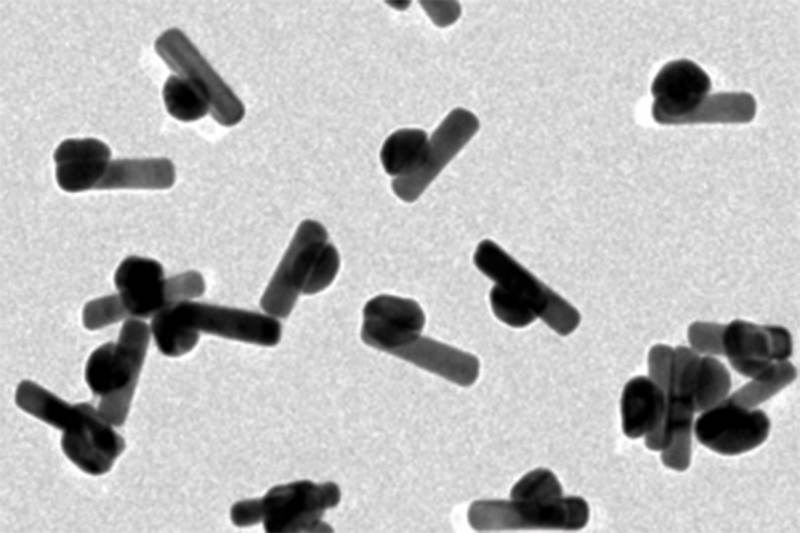
It is one of the blackest materials on Earth – but it can transform light into any colour you want. Simple to make, this chameleon material could one day boost solar power.
The world record for blackness is held by a material made from carbon nanotubes, which absorb 99.8 per cent of light when they are layered a millimetre thick.
But a nano-material consisting of tiny hammer-like shapes made of gold, shown above, has achieved almost as much blackness – and researchers have discovered that with a small addition it can also reflect any colour you choose.
Andrea Fratalocchi at King Abdullah University of Science and Technology in Saudi Arabia was inspired by beetles whose thin shells reflect all wavelengths of light, making them appear whiter than any artificial material.
Fratalocchi wondered if the effect could be reversed. He designed a theoretical system that involved a tiny concave shell, attached to an infinitely long tube designed to guide waves. If you could build such a structure, light would enter the shell and then travel along the tube, never to be seen again.
Then, using plasmonics – materials that bend light along different paths and could make invisibility cloaks a real possibility – Fratalocchi approximated this design with gold nanorods.
At just a hundredth of a millimetre thick, the material absorbed 98.43 per cent of light. This level of light absorption means it could be painted onto other surfaces to turn light into heat. Because gold is an excellent conductor, it would transfer heat more efficiently than carbon nanotubes, says Yuri Kivshar at the Australian National University in Canberra.
But when a simple dye is added to the material, its behaviour changes drastically: rather than absorbing the light energy and emitting it as heat, it emits it again as light, but at a single frequency. Everything in the visual and infrared spectrum is converted to the colour of the dye.
If a lot of sunlight were focused onto the material so that it exceeded a threshold energy, “you should be able to capture a large portion of the sun spectrum and transfer it on a single colour”, says Fratalocchi. This could improve the efficiency of photovoltaic cells, which work best with particular frequencies of light, he says. “We have ongoing research in this direction.”







No comments:
Post a Comment